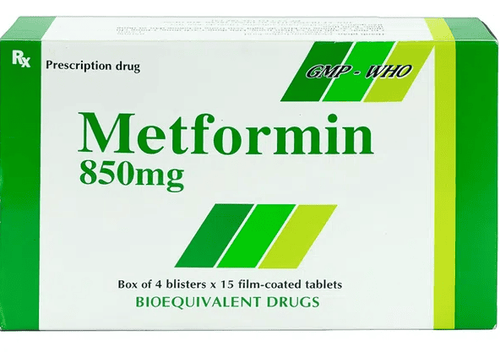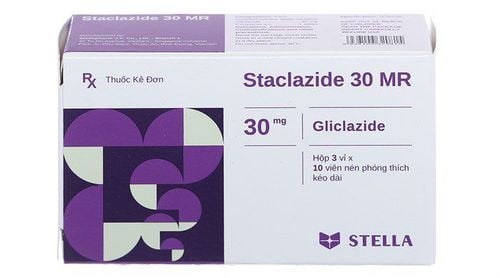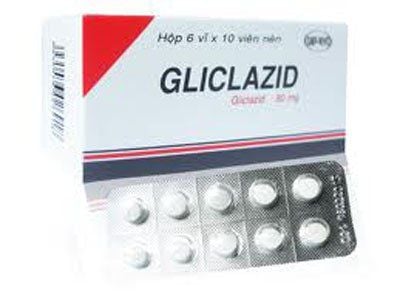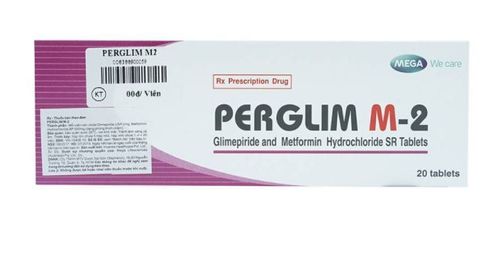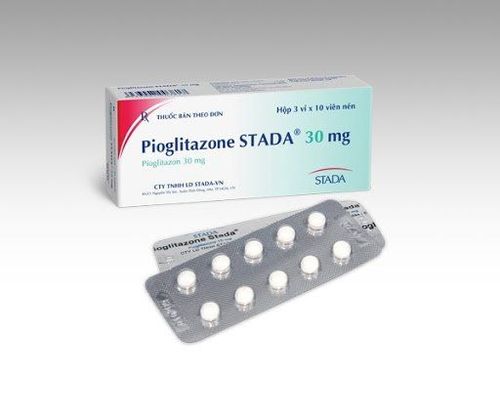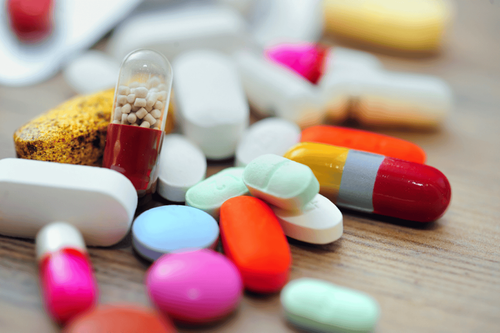This is an automatically translated article.
The article is expertly consulted by Master. Doctor. Vu Thi Duyen, Doctor of Nephrology - Endocrinology, Vinmec Hai Phong International General Hospital.Diabetes is a slow progression of damage to small and large blood vessels due to poor blood sugar control (persistent and persistently high blood sugar) leading to very serious and even fatal eventual consequences. There are 2 types of diabetes (type 1 diabetes and type 2 diabetes). When blood sugar cannot be controlled with oral medications, it is imperative to switch to insulin therapy. So when is insulin indicated for diabetic patients?
1. The link between diabetes and insulin
Diabetes mellitus is a chronic metabolic disorder with the following characteristics: High blood sugar expression is higher than normal, due to a deficiency or resistance to insulin in the body, thus leading to metabolic disorders. blood sugar. Type 1 diabetes occurs when the pancreas produces little or no insulin (Insulin is a natural hormone produced by the beta cells of the pancreas that helps the body convert sugar into energy) and The pancreas produces insulin. But when the body still produces insulin but this insulin does not work properly, this condition is called insulin resistance, which is the main mechanism causing type 2 diabetes. Combined with abnormalities in carbohydrate, lipid and the protein. The disease is always associated with the tendency to develop kidney, fundus, nerve and cardiovascular diseases as a result of atherosclerosis.
The cause of diabetes is currently unknown. Including factors that combine together such as:
Genetic factors and unbalanced lifestyle changes Diet high in red meat, high fat and high carbohydrate content Overweight and obesity... If If parents have diabetes, their children will be more susceptible to the disease, or a lifestyle that includes an irregular diet and exercise is also easy to cause diabetes. Psychological stress factors.
Trắc nghiệm dành riêng cho người mắc đái tháo đường: Chế độ ăn của bạn đã hợp lý chưa?
Người bị bệnh đái tháo đường cần phải quan tâm nhiều hơn đến cách tính toán khẩu phần ăn sao cho phù hợp với nhu cầu và tình trạng sức khỏe. Nếu chưa rõ, bạn có thể tìm hiểu kỹ hơn thông qua bài trắc nghiệm ngắn sau đây.2. Type 1 diabetes (insulin dependent diabetes)
Type 1 diabetes occurs when beta cells are destroyed, so the patient has no or very little insulin, 95% due to autoimmune mechanisms, 5% idiopathic. Patients with insulin deficiency, increased blood glucagon, untreated will have ketoacidosis. The disease can occur at any age but is mainly seen in children and adolescents. Patients with type 1 diabetes produce little or no insulin, so sugar cannot enter the cells to produce energy for the body. As a result, blood sugar levels rise, patients with type 1 diabetes must be treated with insulin injections to control blood sugar.
Damage to beta cells in patients with type 1 diabetes often persists for many years. However, the symptoms of type 1 diabetes usually appear within a few days to a few weeks with clinical manifestations such as rapid weight loss, increased urination, thirst. Diabetes often occurs in young people under 40, underweight and thin, with strong clinical symptoms of syndrome 4 (eating a lot, being thin, drinking a lot, urinating a lot).

Chẩn đoán và phân loại đái tháo đường loại 1
3. Type 2 diabetes (non-insulin dependent diabetes)
People with type 2 diabetes can produce insulin normally, but the insulin does not work effectively or is called insulin resistance in the body, resulting in sugar not moving into the cells, so blood sugar cannot be controlled. persistently high blood sugar. Type 2 diabetes accounts for 90-95% of diabetes cases.
This form of the disease at least in the early stages or sometimes throughout life the patient does not need insulin to survive. Patients with type 2 have no autoimmune beta-cell destruction, no autoimmune antibodies in the blood. Type 2 diabetes commonly occurs in people over 40 years old and overweight and obese. Clinical features are not aggressive, even asymptomatic, only incidentally discovered when treating other diseases or when there are complications of the disease. Clinical manifestations such as obesity, overweight, family history of type 2 diabetes, ethnic characteristics with high prevalence, acanthosis nigricans, polycystic ovary syndrome.
Some patients with type 2 diabetes can manage their disease well by controlling their weight, diet and exercise, and taking blood sugar-lowering medications. When blood sugar is not controlled by oral medications, it is imperative to switch to insulin injections.

Khi đường máu không kiểm soát bằng thuốc uống thì bắt buộc phải chuyển sang dùng tiêm insulin
4. Control and treatment of diabetes
Treatment of diabetes must closely combine all three issues: diet - medicine - physical activity - daily blood glucose monitoring. The goal of diabetes treatment: HbA1C < 7% and fasting blood sugar maintained from 3.9 to 7.2 mmol/l, blood sugar 2 hours after eating < 10 mmol/l. Combine treatment with associated risk factors such as hypertension, dyslipidemia. Indications for insulin injection:
Mandatory for type 1 diabetes and gestational diabetes. Type 2 diabetes when blood sugar is not controlled (blood glucose > 14 mmol/l and HbA1C > 11%). When the body has an infection, surgical intervention, liver failure, kidney failure, allergy to hypoglycemic drugs, ketoacidosis or increased osmotic pressure.





